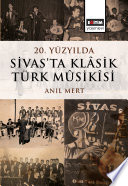Annex 1: About the Art of Calligraphy
About the Art of Calligraphy Tohum Dergisi, Istanbul, 1969 The Origin and Character of Writing The art of calligraphy is an abstract art form where the deepest expression of the Arabic alphabet is blended with Turkish genius. As the late master İ.H. Danişmend stated in his Islamic History Chronology, the Arabic alphabet originates from the Phoenician script. The Latin alphabet, […]


